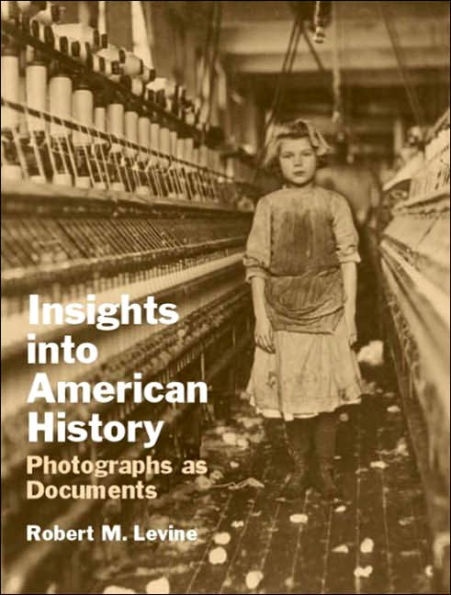Paul Byers, a professional photographer and Columbia University anthropologist, argued a generation ago that of all communications media, still photography was the least studied and least understood. Byers' words may be true, but this book argues that photographs inform historical research. It seeks to guide readers through the analytical process.
We need such a guide. Excellent books and scholarly articles have been written on the history of photography and on ways of interpreting photographic images, mainly from the standpoint of art. For a list of these sources, see suggestions for further study at the end of this book. What makes this book different, however, is its focus on reading photographs for their intrinsic historical value. This is the goal of Insights into American History.
Photographs may show society in ways considered offensive today, but which to contemporary viewers of the era seemed perfectly normal. Analysis of images helps us understand social values and ways of perceiving past times. This characteristic, of course, goes both ways. To some, photographs provide novel information about the culture portrayed; to others, the viewer's knowledge of the larger culture gives the pictures meaning.
Whichever side one chooses, this book argues that when photographs are examined carefully, just as when examining any other historical document, they can bring insight to historical interpretation. The problem is that no accepted criteria exist for studying photographs forensically—that is, as sources for information about society past and present. We describe pictures as "saying" something, or "suggesting this or that," but we have few concrete guidelines to proceed. Yet photographs provide invaluable clues, sometimes overlooked, about the past. They reveal to us the ways earlier generations saw themselves. Photographic styles reflected social conventions, and thus provide insight about the times. This book argues that photographs do not "speak," but that they provide an infinite number of hints that awaken our own powers of interpretation. Photographs, as well, may be arresting artistic compositions, but it is in their ordinariness—their detailed description of how things were, how people lived, what they wore, how they cut their hair, whether they protected their eyes while performing industrial work, whether small children toiled in rural fields—that they become historical documents of inestimable value.
Historical photographs—found in boxes in attics, in museums, and at flea markets-are not the only visual images that "cameras" recorded. Very recently, scholars have discovered that some of history's great painters—going back as far as the thirteenth century—relied on projection devices that projected images by concave mirrors to trace subjects. Curators at the Philadelphia Museum of Art now believe that Thomas Eakins' painting, "Sailboats Racing on the Delaware," and his 1885 masterpiece "The Swimming Hole," used Victorian projection devices, versions of candle-lit magi lanterns, to create collages that were traced using compass lines on a sing canvas. Seventeenth-century Dutch painter Johannes Vermeer likely projected images on his canvases to add a realistic sense of perspective.
To be useful for historical analysis, a photograph does not have had to be taken by a famous photographer. Appropriate images range from framed photographs in museums to snapshots taken with a Brownie (a 1900s predecessor of the Instamatics of the 1970s and today's point-and-shoot cameras) and stored in a family album. A photograph is a document, just as is a diary, an old newspaper, a court decision, a property deed, or a last will and testament. Photographs in themselves cannot offer the final word on a historical argument, but, like other documents, can contribute to a historical judgment.
Photographic commentator Ralph Hattersley once remarked that when we look at a photograph, "we are also looking indirectly at the person who made it." No two photographs are alike, because each photographer produces a different image. Why the subjects are posed in a certain way, how the angle of view affects the image's impact, whether the subject is in sharp focus, or blurred, or captured in an unexpected manner—all reflect the decision of the photographer to make the photograph in a specific way.
During the decades from the late nineteenth century to the 1940s, more than anything else, photographs brought the news of the world to ordinary people. At the turn of the century, families gathered in parlors to view stereopticon cards placed in hand-held devices that gave a lifelike three-dimensional effect.
The photograph on page xi depicts a street in San Francisco's Chinatown district, after the California city's devastating April 1906 earthquake. What information can we ascertain from the photograph? How does it help us understand this point in time?
"Reading" photographs as documents should be a "hands-on" experience. But although we may attempt to describe our feelings about photographs, we lack agreed-upon rules with which to evaluate them. Bookstores and libraries devote many shelves to photography. Photographs include visually powerfully images, but few guides have been written helping researchers to understand how to work with photographic information.
That is the aim of this book.






